For those lucky enough to lock in a fixed rate on the their home loan prior to the interest rate rises, the question around what your options are once you fixed rate ends may be starting to loom.
Once your fixed rate ends, there are two key options you will need to consider:
1. Revert to a variable rate
When your fixed rate home loan ends, your home loan will automatically revert to a variable interest rate. If the variable rate is competitive or if your loan includes package perks which provide reduced fees it may be worth considering staying on this new variable rate.
Of course, one of the keys things to be mindful of are changes to interest rates based on the market rates set by the Reserve Bank of Australia (RBA).
The key advantages of a variable rate home loan are:
- Lower repayments when interest rates are low
- Added features as part of your loan including the ability to redraw additional repayments and an offset account
The difficulties with opting for a variable rate loan typically include:
- Higher repayments when interest rates rise
- Cash flow uncertainty making it harder to plan and budget
2. Lock in a new fixed rate
If market perception points towards further interest rate rises, you may want to consider locking in a new fixed rate. The timeframes for a fixed rate can vary between lenders, but usually sits between 1 and 5 years. If interest rates are expected to continue to rise, locking in a rate now to ensure no further increases to your home loan repayments may be worth the peace of mind.
The key advantages of a fixed rate home loan are:
- The ability to lock in a set rate and know exactly what your repayments will be
- Peace of mind if rates are on the rise
- The ability to plan and budget
An Auswide Bank fixed rate home loan also provides additional features which most lenders will usually only offer as part of a variable rate home loan. These benefits include:
- The ability to redraw any extra money you've paid towards your home loan~ (you can use this towards unexpected expenses, a holiday or a home renovation).
- An optional mortgage offset account which provides a 100% interest offset benefit so you can pay off your home loan earlier
Common considerations when choosing a fixed rate home loan are:
- The interest rate could be higher than a variable rate
- The possibility of missing out on lower interest rates over the fixed term if market rates drop
What is a mortgage offset account?
Whether you choose a variable rate or fixed rate home loan, one of the key benefits you would have noticed is a mortgage offset account. But what makes it so valuable to homeowners?
If you have a home loan of $300,000 and $20,000 in your offset account, you'll only be charged interest on a loan balance of $280,000 ($300,000 - $20,000).
Essentially, the balance in your mortgage offset account is offset against the amount owing on your home loan, potentially saving you thousands of dollars on interest, taking years off your home loan.
If your fixed rate home loan is ending, chat with one of our home loan specialists. They will provide you with personalised advice to get you on the right track.
This information provides general advice only. We do not provide advice about this product based on any consideration of your personal objectives, needs or circumstances. ~Redraw is subject to Auswide Bank's discretion – limits may apply.

